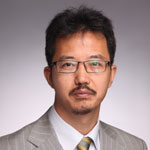Trump's forthcoming China visit
By George N. Tzogopoulos
In April 2017 Presidents Xi Jinping and Donald Trump held their first meeting in Mar-a-Lago. They decided to enhance dialogue aiming at improving the Sino-American partnership. Specifically, four institutional sets were agreed: the Diplomatic and Security Dialogue; the Comprehensive Economic Dialogue; the Law Enforcement and Cybersecurity Dialogue; and the Social and Cultural Issues Dialogue. The first two have already been launched in the US, helping Beijing and Washington to make some initial progress towards a better understanding. Xi and Trump also agreed in Mar-a-Lago on a 100 Day Action Plan with emphasis on trade, which has now expired. The two leaders met again last month on the sidelines of the G20 Summit in Hamburg and directed their security and economic teams to proceed on the grounds of relevant discussion schemes.
![Chinese President Xi Jinping (R) and his U.S. counterpart Donald Trump take a walk to further discuss bilateral cooperation issues in the Mar-a-Lago resort in Florida, the United States, April 7, 2017. [Photo: Xinhua]](https://chinaplus.cri.cn/images/201708/14/fb3768f0-10f5-41dd-59d4-ad18cc3c3404.jpg)
Chinese President Xi Jinping (R) and his U.S. counterpart Donald Trump take a walk to further discuss bilateral cooperation issues in the Mar-a-Lago resort in Florida, the United States, April 7, 2017. [Photo: Xinhua]
Subsequently, the preparations for Trump’s China visit in the near future – after the invitation extended to him by Xi in April – have already started. Chinese Foreign Minister Wang Yi recently confirmed this by speaking to reporters after talks with his US counterpart Rex Tillerson in the Philippine capital Manila. Trump’s forthcoming China visit will be another opportunity for the two countries to look for a modus vivendi, perhaps a more important one in comparison to that of Mar-a-Lago. As long as time passes, the new US President becomes more politically experienced and his foreign policies are clearly formulating.
Starting with economics, which had been Trump’s unquestionable priority during his pre-election campaign, the bilateral relationship has been provisionally shaped in a much more constructive manner as opposed to pessimistic predictions of the last months of 2016 and the first of 2017. The scenario of a trade war cannot be definitely excluded but does not seem likely. Further to this, China is not any longer publicly illustrated as a ‘currency manipulator’ by the US President and his colleagues who have changed their tone in approaching the other side.
Moreover, China and the US have broken the ice in fields such as the trade of farm products, financial services, investment and energy. Chinese cooked poultry, for example, has entered the US market and US beef is now available in the Chinese market. On the whole, Beijing and Washington agree on the need of achieving a better balance in their trade but disagree on the way to achieve it. The former expects from the latter to liberalize export barriers against it to the same level as those applicable to some other countries and wants to import more high-tech products and technologies for civilian use. And the latter suspiciously looks at Chinese exports and is developing its ‘America First’ model by listing steel, aluminum, automobile, aircraft, shipbuilding and semiconductor in a basket of ‘critical industries’. It threatens to impose new tariffs and perhaps sanctions but it is not evident if words will be followed by practice and if China will be the only country to be targeted at this level.
Continuing with politics, the North Korean imbroglio is at the epicenter of attention. Here, China and the US are in line concerning the necessity of Pyongyang abandoning its nuclear program. Recent sanctions unanimously decided against it at the UN Security Council outline their joint objective. Nevertheless, China believes that the increase of American military presence in the Korean Peninsula – principally the establishment of THAAD in South Korea – complicates the matter, destabilizes the region and gives no motivation to Kim Jong-un to collaborate. For its part, the US is criticizing China for allegedly failing to mediate and persuade Pyongyang to change course. But while Trump puts often the blame on Beijing, his Secretary of State Rex Tillerson is more moderate in public remarks. ‘We don’t blame China for the situation in North Korea’ was the comment he made in Manila. It is not straightforward whether Trump and Tillerson disagree or are pondering which strategy better responds to the ongoing deadlock.
Furthermore, American policies in South-East Asia impact on the agenda of Sino-American relations. For the time being, Trump’s approach is not different from that of his predecessor, Barack Obama, in South China Sea. The so-called American-led Freedom of Navigation Operations (FONOP) are regularly taking place highlighting Washington’s will to intervene. This is also the case with Tillerson maiden trip to South-East Asia and especially his meeting with the President of the Philippines Rodrigo Duterte, an emerging new friend of China. By contrast, Beijing only calls on countries of the neighborhood, which have a direct national interest at stake, to diplomatically solve any disputes. In that regard it is prepared to foster its collaboration with ASEAN member-states. The ambition is to advance the negotiations of the Code of Conduct (COC) and all together contribute to stability in the South China Sea.
Within this context, the forthcoming Xi-Trump China Summit can be expected with seeing the glass either half-full or half-empty. The first option lays emphasis on common ground beyond contradictory positions as the first results of the Economic Dialogue are suggesting. And the second is mainly synthesized around important existing differences, which can hardly be bridged. A peaceful vision for the future cannot but rely on the first option, which is shared by the two presidents in all their communications. The world needs China and the US collaborate, even if they have several differences.
(Dr George N. Tzogopoulos is a lecturer at the European University in Nice, France and the Democritus University in Thrace, Greece. He is also a research fellow at the Centre International de Formation Européenne (CIFE), the Hellenic Foundation for European and Foreign Policy (ELIAMEP) where he coordinates its Asian Studies Programme and a research associate at the European Council of Foreign Relations (ECFR). George is also the founder of chinaandgreece.com an institutional partner of CRI Greek.)






